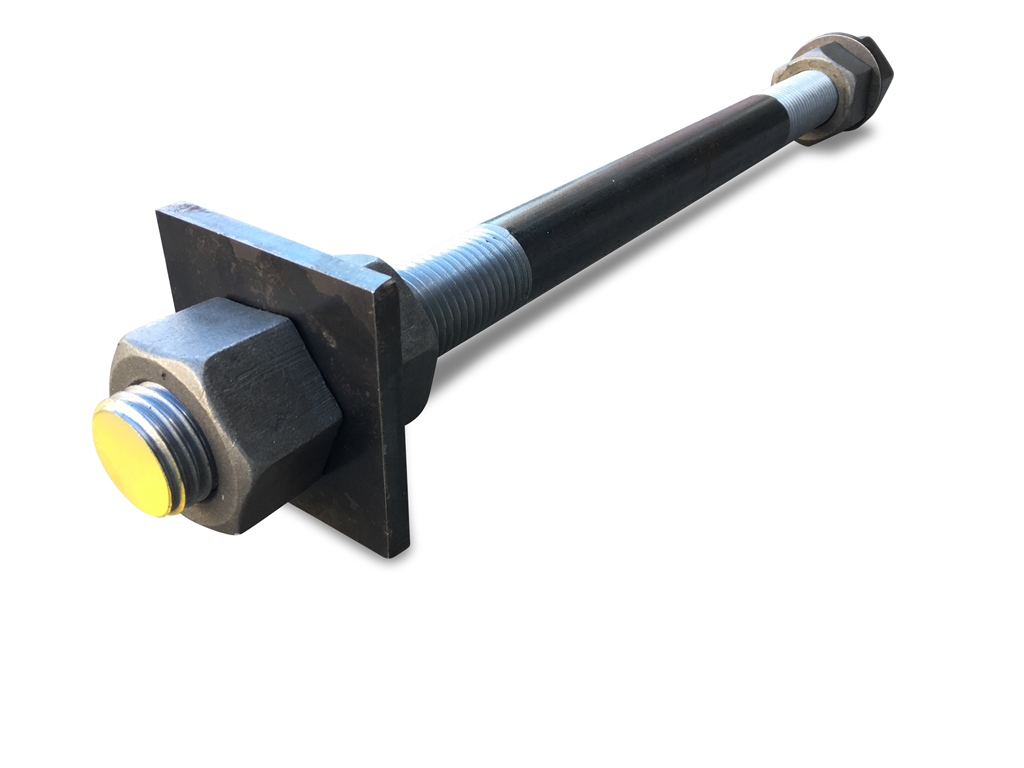Double End Studs are often referred to as “anchor rods”, “threaded studs” and several other terms. They are a standard means of anchoring a structure to it’s foundation. They have been a reliable method by which to anchor things like a traffic signal poles and 100-story buildings.
There a several critical components to a Double End Stud. They are as follows: The overall length of the Double End Stud, the length of the thread on the projecting end, and nuts and washers. Additionally it is common to include an anchor plate in this application.
Here’s how a Double End Stud works:
An anchor plate is typically fastened between two hex nuts on a threaded end of the Double End Stud which is to be encased in concrete. This is either performed by the Double End Stud manufacturer or by the steel fabricator who purchases the rods.
Once they’re in the field the Double End Stud or “Anchor Rod” is held in place by a template. This template is used to hold the Double End Stud’s positioning before concrete is poured. It helps to keep the Stud properly positioned related to the depth of the foundation, the desired projection of the thread from the concrete, and proximity to other bolts.
Once the bolts are in place then the concrete is poured. Some of the threaded end of the stud will be project outward from the surface of the concrete. Once the concrete cures a fabricated steel structure can be fastened to the threads on the projecting end of the Double End Stud.
As load is applied to the structure and the Double End Stud is pulled away from the concrete it becomes the job of the anchor plate to hold firm by resisting against the cured concrete above it.
The most common applications for Double End Studs are larger structures and applications where more advanced engineering may be required such as bridge, highrise, and stadium construction. Other applications for Double End Studs include wind farms, solar power generation, and modern DOT specifications. It is becoming less common to use Bent Anchor Bolts to anchor critical structures.

